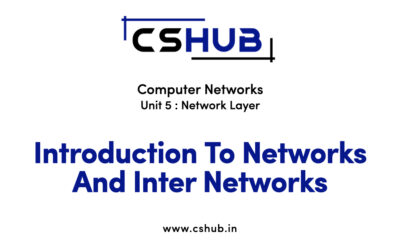Point-to-Point Protocol (PPP) Frame Format Point-to-Point Protocol (PPP), which is frequently used at the data link...
Computer Networks
Introduction To Networks And Inter Networks
Introduction To Virtual Circuits And Datagrams
Datagram switching Datagram packet switching Each packet, or datagram, is treated as a separate entity in this packet...
Introduction To Addressing
What is a Network Address? A computer network is a collection of several interconnected computers that share one or...
Introduction To Sub Netting
Introduction To Subnetting Subnetting is the process of dividing a larger network into smaller ones in order to...
Introduction To Routing (Distance Vector And Link State Routing)
Distance Vector Routing Dimensional Vector Routing protocols use distance to calculate the best route to a specific...
Introduction To Network Layer Protocols (Arp, Ipv4, Icmp, Ipv6)
Network Layer Protocols A network's computers can all be uniquely identified and addressed because of their IP...
Process to process Delivery (client-server paradigm connectionless versus connection-oriented service, reliable versus unreliable)
Introduction To User Datagram Protocols
Introduction To TCP/IP Protocol
Introduction To Flow Control
Flow Control in Data Link Layer Flow control is design issue at Data Link Layer. It is a technique that generally...
What Is FTP (File Transfer protocol)
What Is SMTP (Simple, Mail Transfer Protocol)
Simple Mail Transfer Protocol (SMTP) One of the most useful services on the internet today is emerging as email. The...
Telnet And Remote Login Protocol
What Is WWW (World Wide Web)
World Wide Web The World Wide Web (WWW), also referred to as the Web, is an information system that makes it possible...
What Is HTTP (Hyper Text Transfer protocol)
What is HTTP? HTTP is the foundation of the World Wide Web and is used to load web pages through hypertext links. HTTP...
What Is Uniform Resource Locator
URL (Uniform Resource Locator) What is a URL? An Internet resource can be found using a URL (Uniform Resource...


















